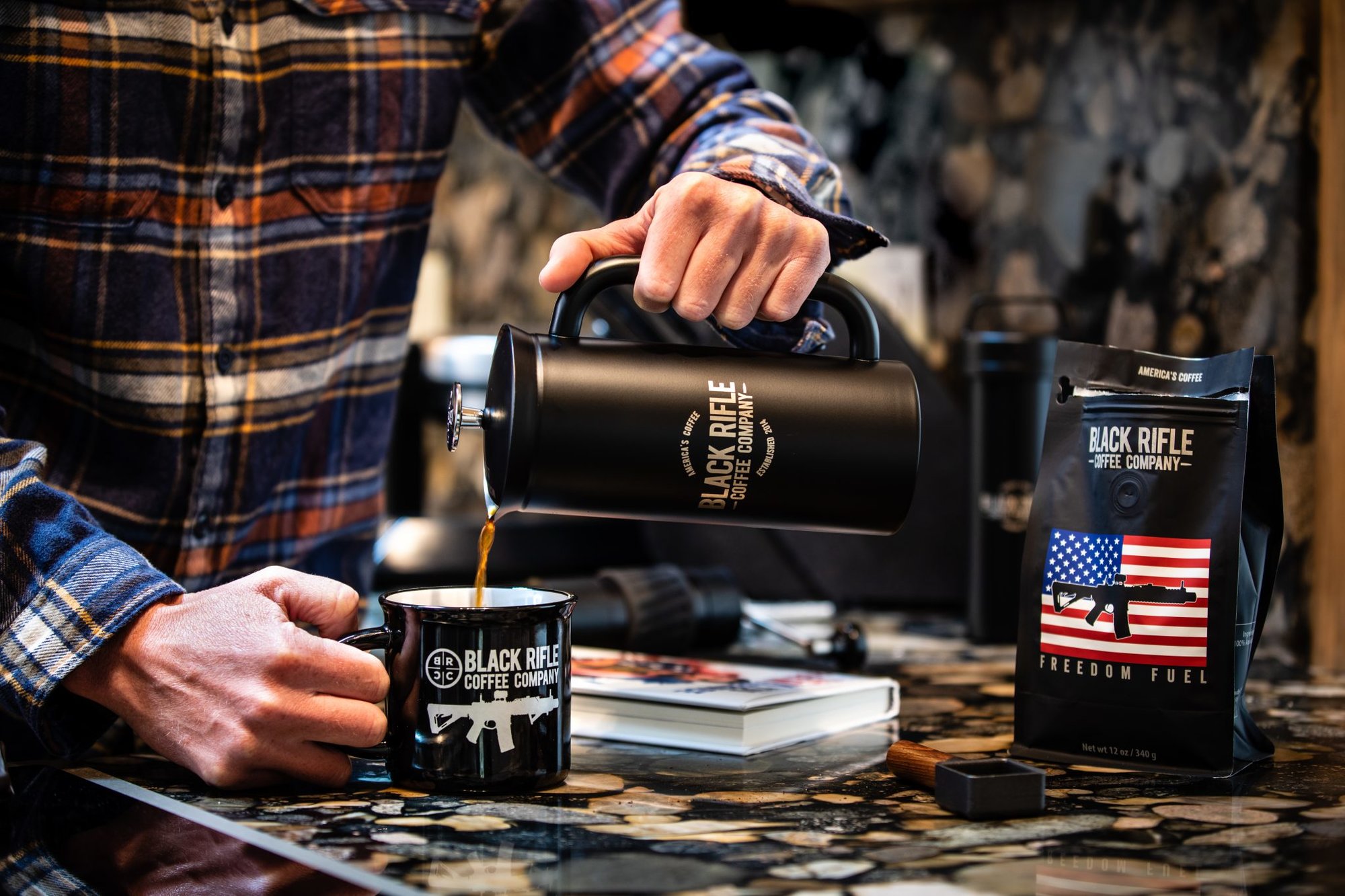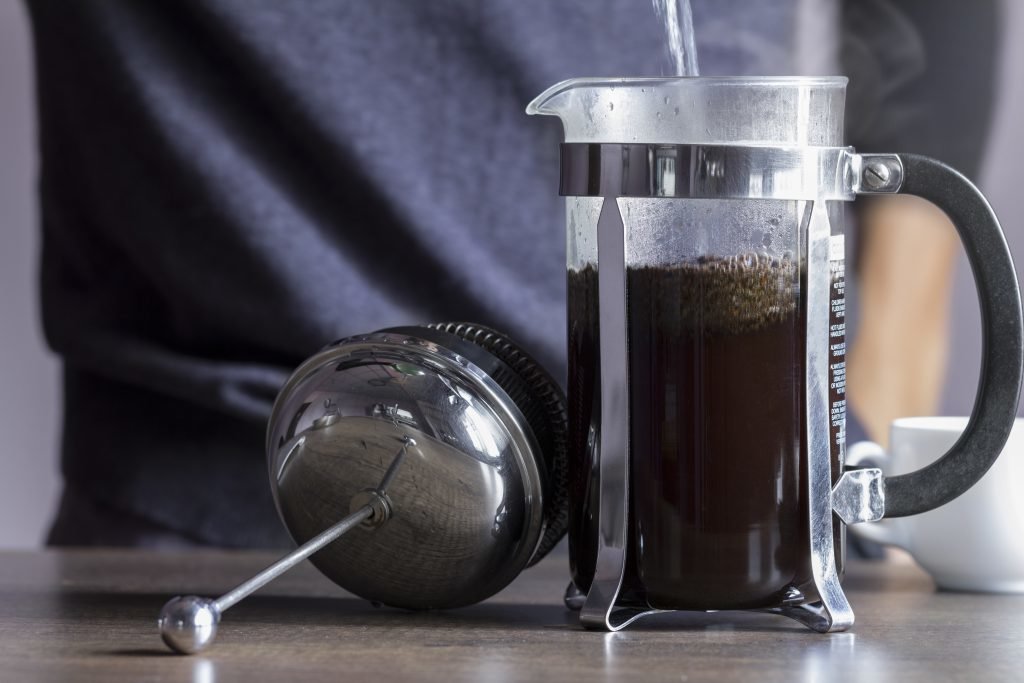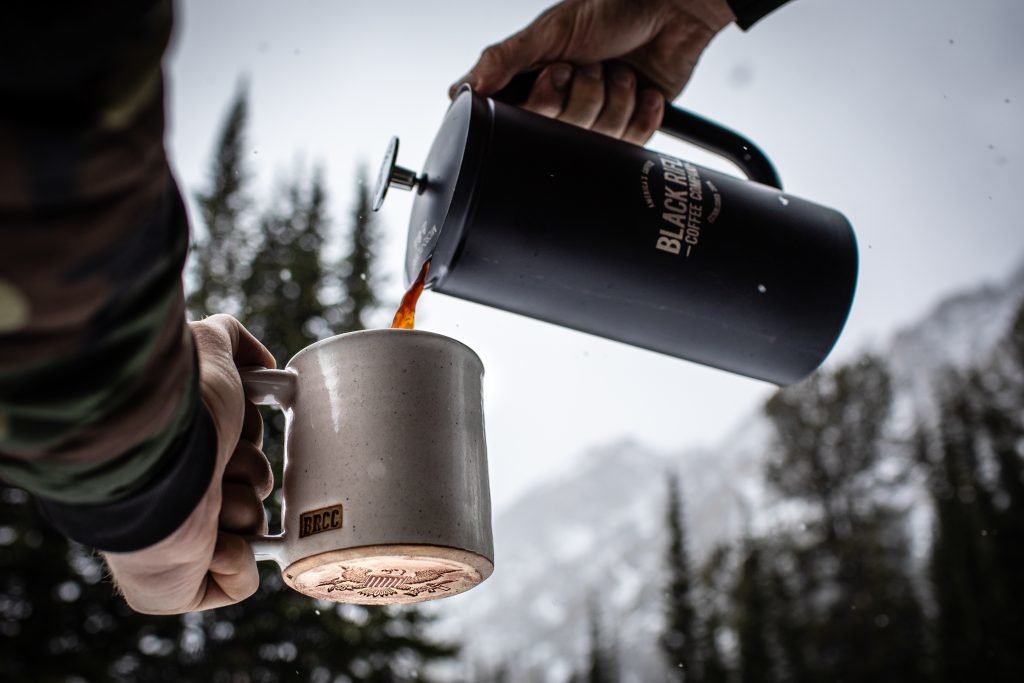
The elegant science of the French Press. Photo courtesy of Black Rifle Coffee Company.
Before I took the time to learn more about coffee, and how to tap into all the flavors within each bean, my French press was more of a hassle than it was a positive experience. I would throw the grounds in there, splash boiling water on top, and rush to pour it into my mug.
Rarely did it taste as good as I wanted it to.
There are a few things you can do that will make your French press coffee taste even better and turn that hassle into a positive and delicious experience.
1. One of the most important things I have learned about making better French press coffee is don’t boil the water. Boiling the water scorches the beans and creates a bitter and burnt taste, masking any other flavors and aromas from releasing.
If you want to be precise, you can heat the water to about 195 to 204 degrees. This is an ideal temperature to allow the water to extract the flavor from the coffee beans. If you heat up your water on the stove like I do, look for steam, maybe a light scream from the kettle, and try to take it off heat right before it boils.

If you end up boiling the water, just give it a minute to cool down and stop boiling before you pour it over the coffee.
2. While you are waiting for the water to get hot, it is time to prep your beans. If you have whole beans, grind them fresh! A coarser grind works better with a French press to avoid excessive silt. If not, you can still get the great flavors with pre-ground coffee.
Use about 4 to 6 tablespoons of grounds — or about 20 to 30 grams — and 32 ounces of water, or 946 grams, for an end result of approximately 24 ounces of drinkable coffee. (The grounds in the bottom soak up a little bit of water.)
This is one step in the French press process that allows you to adapt the flavor to your liking. If the coffee comes out too strong, dial back the grounds or add more water. If the coffee is weak, increase the grounds or decrease the water. You can also play around with grind size to see how it affects the flavor.
3. This next part is my favorite part about making coffee — the bloom. After your water has reached the appropriate (non-boiling) temperature, it is time to add it to your grounds.
Only add enough water to get all the grounds wet. Sometimes I have to shake the press or swirl it to soak all the grounds.
This limited amount of water will allow for the grounds to bloom. The bloom is where the grounds start to release carbon dioxide gases, which brings forth the flavors from the roast, as well as the natural coffee flavors.
Look into your grounds at this stage, and you can watch the bubbles rising up through them. If your beans are freshly roasted and freshly ground, you will see more bubbles because more gases are being released.
If you have only a few bubbles, it just means that your beans have already released some of their gases while on the shelf.
Let the bloom sit for about 30 seconds, then move on.

4. Slowly pour the rest of the water into the French press. Move the flow of the water around so that you are continuing to soak and agitate all the grounds within the press. This is the best way to maximize the flavor. If you pour all your water into the French press at one spot, you only stir a small amount of your grounds. If you pour in a circular motion, it helps mix everything together.
5. After you have finished filling the press, it is time to let the coffee steep. I usually leave mine for 3 to 5 minutes. If you leave it too long, it will start to get bitter, which some people like, but most would prefer to avoid.
When the 3 to 5 minutes are up, stir the grounds one more time to release any last flavors. This helps the grounds drop to the bottom of the press but also creates a light foam on top.
6. Now it’s time for the press. Pressing down slowly on the plunger forces the coffee grounds to the bottom of the carafe. Then just pour the liquid into your favorite mug, and take that first sip. Note: Don’t let any remaining coffee sit in the carafe, as it will continue to soak in the grounds and extract less desirable flavors.
Read Next: Eat Your Coffee: Espresso Burger Bombs

BRCC and Bad Moon Print Press team up for an exclusive, limited-edition T-shirt design!
BRCC partners with Team Room Design for an exclusive T-shirt release!
Thirty Seconds Out has partnered with BRCC for an exclusive shirt design invoking the God of Winter.
Lucas O'Hara of Grizzly Forge has teamed up with BRCC for a badass, exclusive Shirt Club T-shirt design featuring his most popular knife and tiomahawk.
Coffee or Die sits down with one of the graphic designers behind Black Rifle Coffee's signature look and vibe.
Biden will award the Medal of Honor to a Vietnam War Army helicopter pilot who risked his life to save a reconnaissance team from almost certain death.
Ever wonder how much Jack Mandaville would f*ck sh*t up if he went back in time? The American Revolution didn't even see him coming.
A nearly 200-year-old West Point time capsule that at first appeared to yield little more than dust contains hidden treasure, the US Military Academy said.












